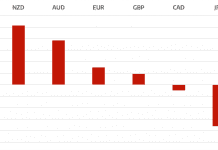
Hedge funds are similar to mutual funds in certain ways, but they also tend to differ greatly when it comes to certain things. They act as a channel for investment but they do not cater to the common person, who cannot gain access to invest in these because of certain limiting factors, such as minimum income and investment amount. In a way, hedge funds can be called mutual funds for the very wealthy.
Hedge funds came into being much later than mutual funds but they have still managed to survive by catering to a niche market that is defined by the qualities that we have already mentioned above. One of the main reasons why the idea of hedge funds took off was that people were looking for ways to multiply their wealth, following the success of mutual funds. Hedge funds gave them the opportunity to do this in a way that promised to reduce risks. This is, in fact, the very reason that gave them this name; the term hedging is used to describe an attempt to decrease the percentage of risk involved in a situation.
The person who came up with the entire concept and who launched the first ever hedge fund back in 1949 is Alfred Winslow Jones. He was born to parents of American origin in the year 1900 in the Australian town Melbourne, where he spent the first four years of his life. He later moved to the United States and received his schooling and higher education from the prestigious Harvard University, from where he graduated in 1923.
Soon afterwards, he was selected to join the Foreign Service. This eventually led him to be posted as a diplomat in Berlin, Germany, during the early 1930s. He went on to pursue further education in his forties and obtained a PhD in the discipline of sociology from Columbia University.
He then started working with Fortune magazine, where he joined the reputable editorial department. This is the stage in his life that is most important with regards to the development of the hedge fund; it is during the time spent here that the idea of starting something truly unique first hit him. In 1948, Jones was assigned an article by the magazine, which proved to be crucial in financial history as it laid down the foundation for the establishment of the hedge fund later on.
The topic of the article was centered on the most popular trends in investment that existed at the time. As luck would have it, this is just what was needed to spark Jones creativity; he researched and analyzed all the latest methodologies that were being adopted in order to increase profitability. It is while writing this piece that he realized that there could be another way to try and achieve the same kinds of results. This prompted him to plan a strategy of his own and led to the creation of a $100,000 fund, 40 percent of which he contributed himself while the remainder was received from investors.
Jones plan was essentially to combine leverage and short selling to get the ideal outcome. He also decided to charge a 20 percent fee for the management of the fund. Another tactic that he employed was to limit the number of investors to 99, so that certain states laws would not be applicable, giving him greater control and flexibility over the fund. This overall combination proved to be a highly successful formula and the fund began to generate significant returns. However, the fund remained relatively under the radar for some time and the idea did not catch on as quickly as Jones would have probably hoped it would. It was a few years down the road that people started noticing the benefits; it then became a popular subject for discussion. Ultimately, the concept began to pick up speed and this paved the way for many more hedge funds that came to be created throughout history.
Related Posts:
The HIstory of Funds and Hedge Funds – Part 1 Introduction
The History of Funds and Hedge Funds – Part 2 The Beginning of Mutual Fund
HedgeThink.com is the fund industry’s leading news, research and analysis source for individual and institutional accredited investors and professionals



































